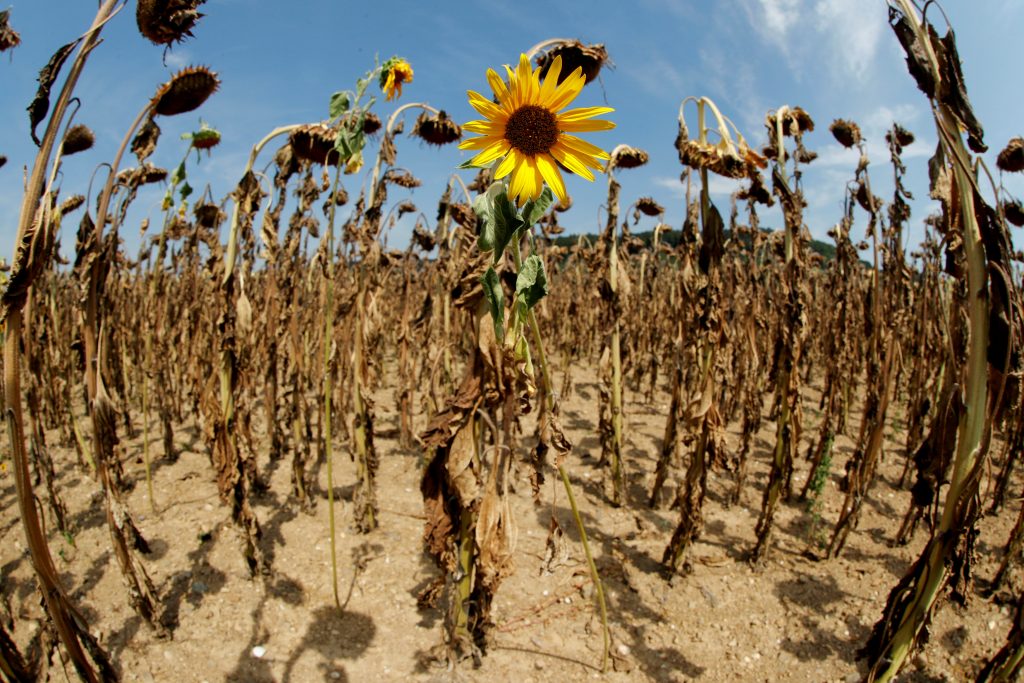Image: FILE PHOTO: A sunflower blooms in between dried-out ones during hot summer weather on a field near the village of Benken, Switzerland August 6, 2018. Picture taken with a fisheye lens. REUTERS/Arnd Wiegmann/File Photo
![]()
By Alister Doyle, Environment Correspondent
OSLO (Reuters) – Scorching summer heatwaves and downpours are set to become more extreme in the northern hemisphere as global warming makes weather patterns linger longer in the same place, scientists said on Monday.
They said there was a risk of “extreme extremes” in North America, Europe and parts of Asia because manmade greenhouse gas emissions seemed to be disrupting high-altitude winds that blow eastwards in vast, looping “planetary waves”.
“Summer weather is likely to become more persistent – more prolonged hot dry periods, possibly also more prolonged rainy periods,” said Dim Coumou, lead author of the study at the Potsdam Institute for Climate Impact Research (PIK) and Vrije Universiteit Amsterdam.
“Both can lead to extremes” such as heat, drought, wildfires or flooding, he told Reuters of the findings in the journal Nature Communications, based on a review of existing scientific literature.
Many parts of the northern hemisphere have experienced baking heat this summer, with wildfires from California to Greece. Temperatures topped 30 Celsius (86 Fahrenheit) even in the Arctic Circle in northern Europe.
The stalling of weather patterns could threaten food production. “Persistent hot and dry conditions in Western Europe, Russia and parts of the U.S. threaten cereal yields in these breadbaskets,” the authors wrote.
They linked the slowdown in weather patterns to the Arctic, which is heating at more than twice the global average amid climate change.
The difference in temperature between the chill Arctic and warmth further south is a main driver of winds that blow weather systems around the globe, they wrote. With less contrast in temperatures, winds slow and heat or rain can linger longer.
“Evidence is mounting that humanity is messing with these enormous winds,” said Hans Joachim Schellnhuber, director of PIK and co-author of a second study about a severe 2016 wildfire in Canada.
“Fuelled by human-made greenhouse-gas emissions, global warming is probably distorting the natural patterns,” he wrote in a statement.
The extent of Arctic ice and snow has been shrinking in recent years, exposing ever more darker-colored water and ground, which soaks up ever more heat and accelerates warming, they said.
Writing in the journal Scientific Reports, Schellnhuber and colleagues found that disruptions to planetary waves were a factor underlying 2016 wildfires in Alberta, which caused damage worth C$4.7 billion ($3.6 billion).
($1 = 1.3055 Canadian dollars)
(Reporting by Alister Doyle; Editing by Dale Hudson)
Copyright 2018 Thomson Reuters. Click for Restrictions.


